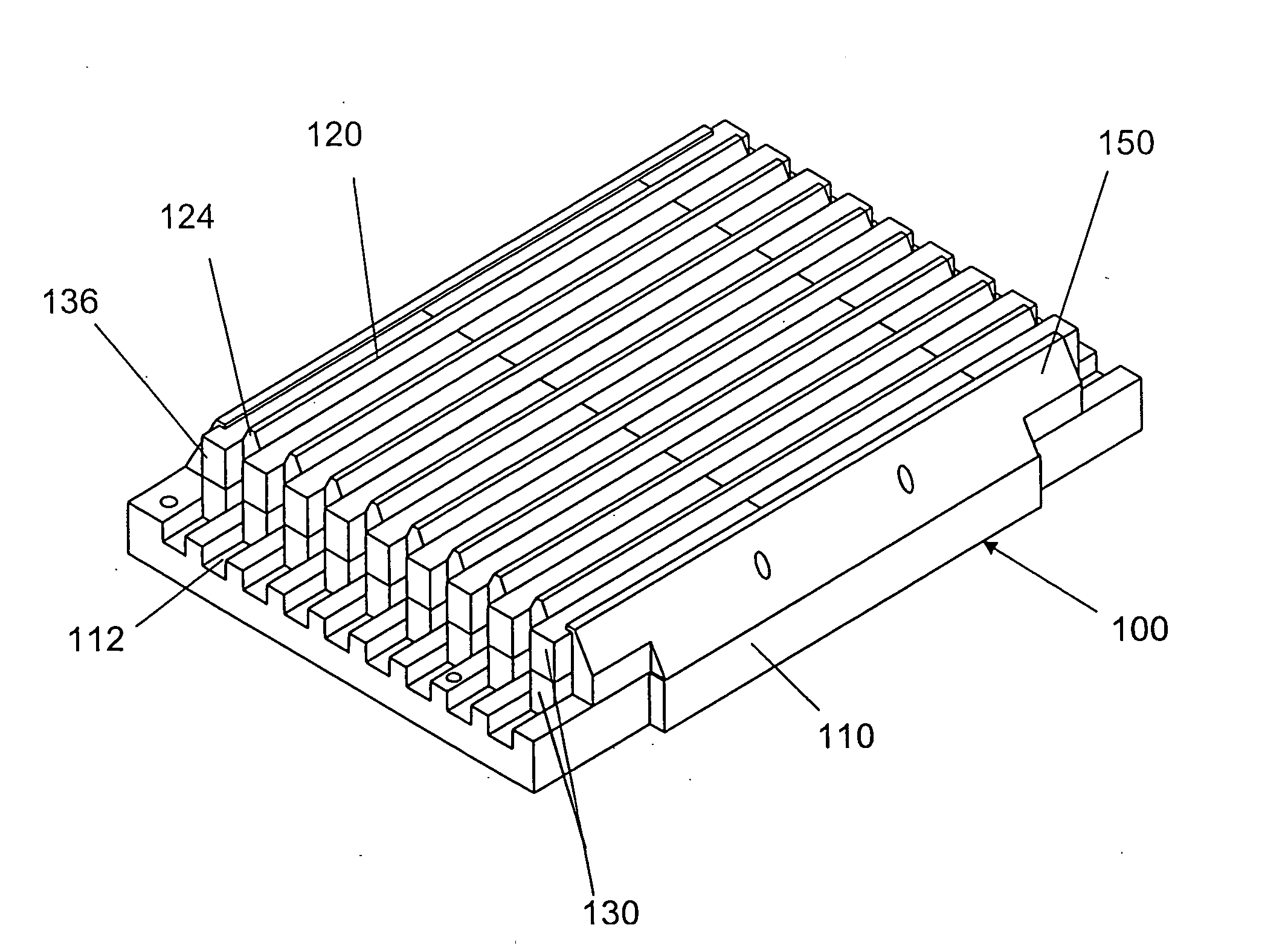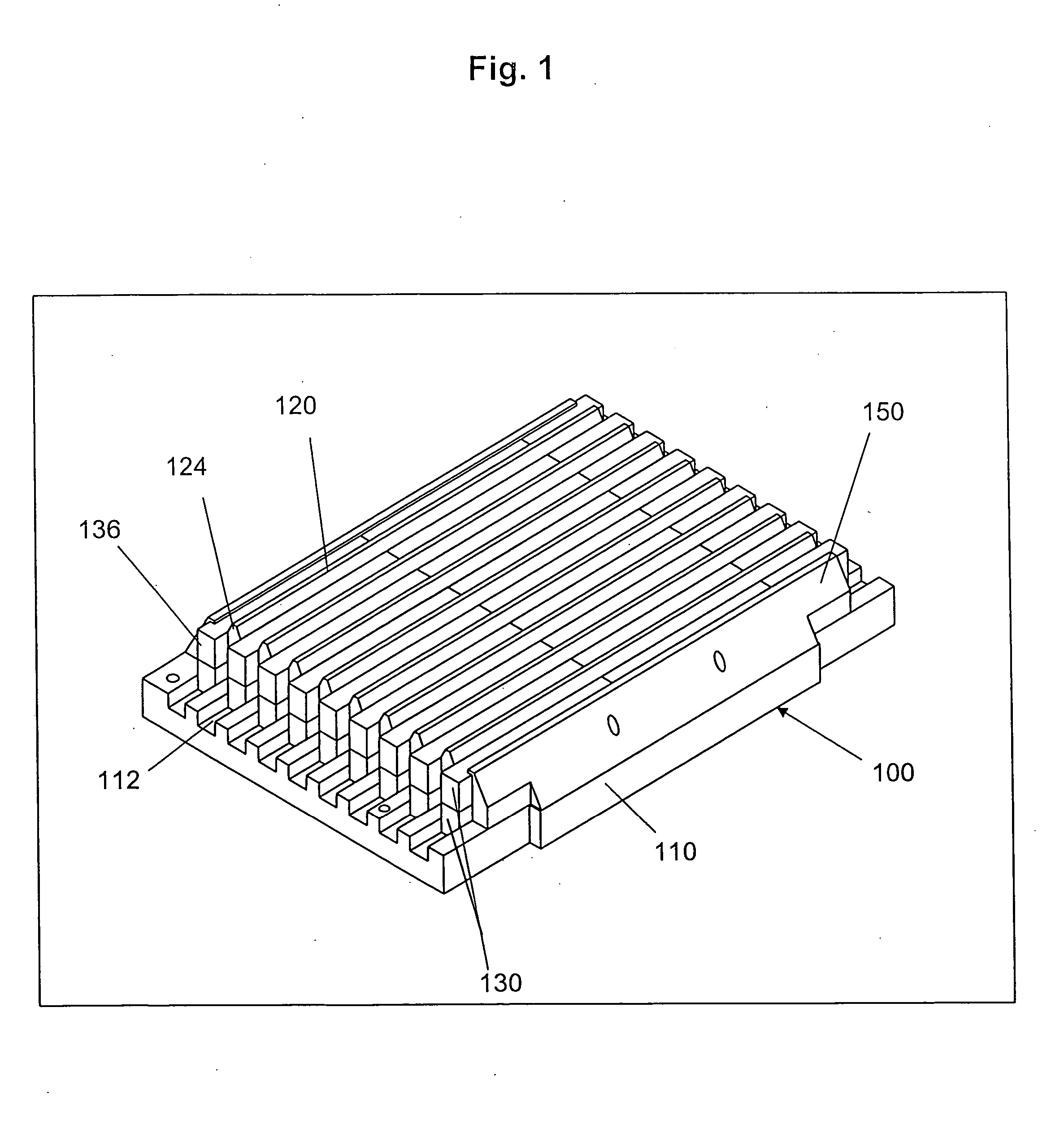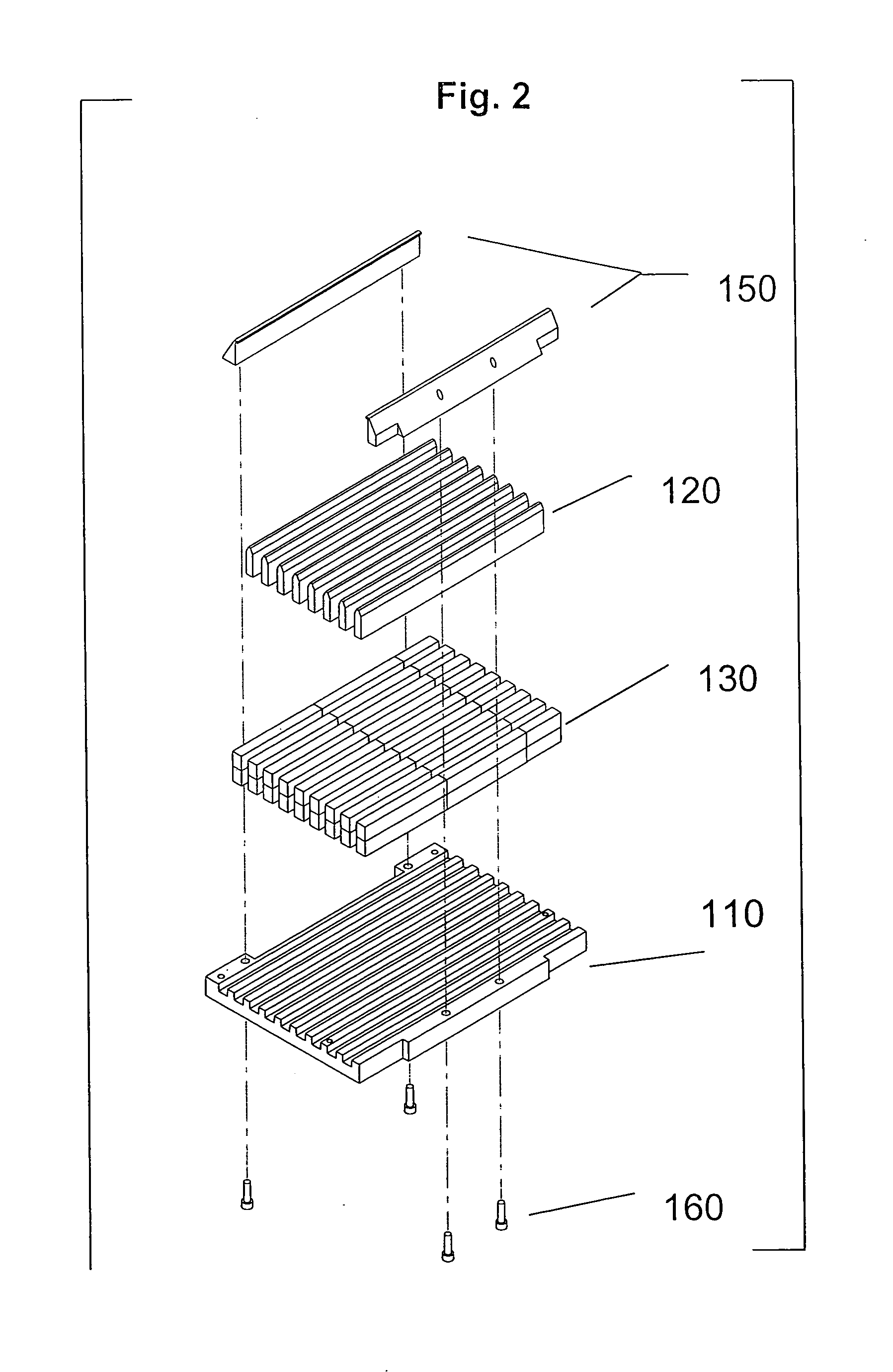High performance hybrid magnetic structure for biotechnology applications
a hybrid magnetic structure, biotechnology technology, applied in the direction of magnetic bodies, laboratory glassware, instruments, etc., can solve the problems of inability to apply biotechnology applications, inability to achieve high-performance hybrid magnetic structures, poor results, etc., to achieve sufficient cross section, improve the field strength of selected poles, and improve the hybrid magnetic structure
- Summary
- Abstract
- Description
- Claims
- Application Information
AI Technical Summary
Benefits of technology
Problems solved by technology
Method used
Image
Examples
example 1
[0155] Hybrid Magnetic Structure for Use with 96- and 384-Well Microtiter Plates
[0156] Referring now to FIGS. 1 and 2, shown is a preferred embodiment of the hybrid magnetic structure for applications involving 96- or 384-well microtiter plates. FIGS. 1 and 2 show the design adopted for the preferred core assembly 100. The machined base plate 110, which was fashioned from aluminum and then clear anodized, was made 5.3 inches×3.64 inches wide×0.375 inches tall to permit a standard microtiter plate to be seated comfortably atop the hybrid magnet structure. The base 110 has 9 slots or grooves 112 to allow a block or blocks of permanent magnet material 130 to sit in each slot. The eight soft ferromagnetic poles 120 sit on the raised spacings between the slots 112. One long notch was created on one long side of the base 110. Two smaller notches were made, one at each end of the opposite long side. This was done to create an asymmetric base plate with a front side and a back side, which ...
example 2
[0162] 2-D Modeling of Magnetic Structures
[0163] Referring now to FIG. 4, two and three dimensional computer models were constructed to further develop and quantify performance of one embodiment of the hybrid magnetic structure. The field plot shown in FIG. 4 is a 2-D boundary value model solved by the code PANDIRA which is a member of the POISSON SUPERFISH codes. The axes of FIG. 4 are in centimeters. The left side of the model is a Dirichlet boundary and implies mirror image symmetry. The model shown has a geometric periodicity of 0.9 cm which is the distance from the center of one pole to the center of the next pole. The magnetic periodicity is twice that or 1.8 cm. Because of the left hand Dirichlet symmetry boundary, the model is a complete representation of an infinitely long structure having three full magnetic periods. The open boundaries at the right of the structure allow complete modeling of the truncation or end-effect fields.
[0164] The field lines shown are lines of c...
example 3
[0166] Field Strength Comparison Test
[0167] Referring now to FIG. 5, the fields of the high performance hybrid magnetic structure of Example 1 are both stronger and extend farther than those of any commercial magnetic plates tested. The invention produces fields and gradients that are up to four times greater than previous industry-standard magnet plates and a more beneficial field distribution for a number of important applications.
[0168] Relative field strengths of five or six different magnet structures are given in FIGS. 5A and 5B. Four of the magnet structures (with “LBL” designation) were developed at Joint Genome Institute / Lawrence Berkeley National Laboratory. The other two are currently available commercially magnet plates. The field strength was measured at two heights, close (less than 0.5 mm) to the magnet structure surface (FIG. 5A) and at 1 cm above the magnet structure surface (FIG. 5B). Measurements were made using a commercially available Hall effect probe. The st...
PUM
| Property | Measurement | Unit |
|---|---|---|
| diameter | aaaaa | aaaaa |
| magnetic period length | aaaaa | aaaaa |
| magnetic period length | aaaaa | aaaaa |
Abstract
Description
Claims
Application Information
 Login to View More
Login to View More - R&D
- Intellectual Property
- Life Sciences
- Materials
- Tech Scout
- Unparalleled Data Quality
- Higher Quality Content
- 60% Fewer Hallucinations
Browse by: Latest US Patents, China's latest patents, Technical Efficacy Thesaurus, Application Domain, Technology Topic, Popular Technical Reports.
© 2025 PatSnap. All rights reserved.Legal|Privacy policy|Modern Slavery Act Transparency Statement|Sitemap|About US| Contact US: help@patsnap.com



